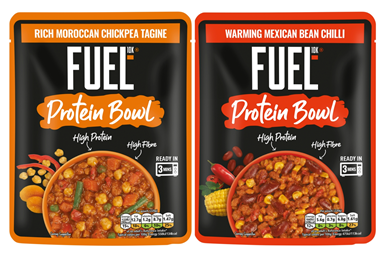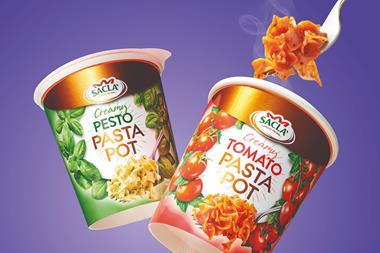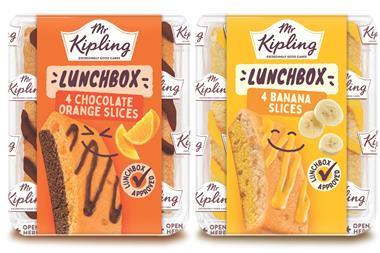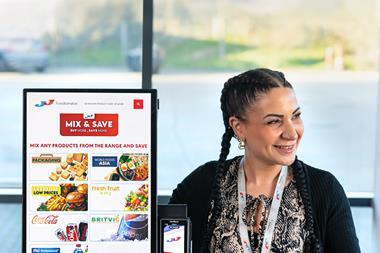As the prestigious Jersey Royal faces increasing competition, a rift has developed among the island’s growers. Richard Clarke reports
Some of our biggest brands have been around for decades: Heinz Baked Beans were first made here 77 years ago, Cadbury’s Dairy Milk is 100 years old and Coca-Cola has been on these shores for 105 years.
But while each of these is legendary in its own right, none is as old as the Jersey Royal, which this year celebrates its 125th anniversary. In 1880 Jersey farmer Hugh de la Haye first produced the spud that remains the only vegetable in Britain to boast EU Protected Designation of Origin status.
But in this age of ubiquitous imported fresh produce, where seasonality has become a meaningless concept, is the Jersey Royal’s cachet on the wane?
Like the first spring lambs, the arrival of Jersey Royal potatoes in the UK has traditionally been a cause for excitement. Before we flew in new potatoes from Spain and other warm countries, it was the first new potato variety of the year available to buy. It meant spring had come and we could say goodbye to dark, cold mornings and hello to light, balmy evenings.
But stronger branding of other new potatoes is threatening to eat into the Jersey Royal’s market. The Charlotte is now almost as well known and newer varieties, such as Sainsbury’s Anya, are winning fans.
Not even the name is sacred: Scottish grower Albert Bartlett & Sons is developing Ayrshire, Cornish and Suffolk Royals, grown from the same variety as Jerseys - the International Kidney.
All this means greater competition and consequent downward price pressure. That’s a problem for a cost-heavy industry that is totally reliant on hand planting and lifting.
But as things get tough for Jersey Royal growers, so the growers are getting tougher. A year ago, they set up Jersey Royal Potato Marketing (JRPM) to market Jersey’s crop, almost all of which is exported to the UK. Marketing director John Neal says: “JRPM has been described as the biggest transformation ever within Jersey agriculture.
“The UK market is highly competitive and the retailers are all urging their suppliers to produce as efficiently as they can.
“The Jersey Royal is an extremely expensive product to grow. The concept behind JRPM was to take our cost of production down to the lowest possible level, and we were able to do that by economies of scale.
“We offer a modern solution to the retailers’ modern problems. A significant step has been taken towards securing the future of the Jersey Royal.”
JRPM was formed by five of Jersey’s biggest growers, who pooled all their land, equipment, labour and, of course, potato yields. Last year, the rest of Jersey’s growers supplied JRPM on a contract basis, in effect creating a marketing monopoly. Having such control over the island’s export crop, which in a typical year is about 30,000 tonnes, gives the island’s farmers greater control of the Jersey Royal brand and how it is sold, says Neal.
“We are operating in a market where there is general deflation in food values and an annual decline in new potato consumption.
“Before JRPM was formed, we had four selling desks in Jersey, and our brand value was being undermined by the intensification of competition between island exporters.
“This fragmented marketing approach was also eroding retailer support.”
Last year was the first time that Jersey’s entire Royal crop was sold through one organisation. But it could well be the last. In December, a group of growers contracted to supply JRPM decided they no longer wanted to. Led by Peter Le Maistre, whose family has grown potatoes on Jersey since 1912, they set up Jersey Quality Produce to market their output. It was a blow to Neal and his colleagues at JRPM, who harbour hopes of bringing the JQP farmers back into the fold.
“We thought it worked very well last year with just one selling desk, but obviously they saw it differently,” says Neal. “But the door is open for discussions with them.”
The reasons for the split are so engrained in the cultural mentality of farmers such as Le Maistre that his hopes may be in vain.
Le Maistre says JQP was born out of “philosophical differences” with the growers involved in JRPM.
“They think big is the way forward,” he says, “but a small family farm can still play a role in the market.”
JQP accounts for 25% of Jersey’s new potato crop, which means it is more than just a fly in JRPM’s ointment. But while JRPM sells most of its potatoes to the big multiples, JQP’s customer base is more fragmented. It does include Marks and Spencer and Budgens, but otherwise comprises what Le Maistre says are specialist wholesalers.
The top end of the foodservice market is a target for JQP, as are niche markets. This year it will send a small quantity of Jersey Royals for sale in Belgian food retailer Delhaize.
But it remains the case that 85% of Jersey’s potatoes go into the UK’s largest food retailers, and that is where JRPM’s priority lies. And the retailers are still committed to Jersey Royals, insists Neal.
“They recognise the strength of the brand and many are prepared to take imported potatoes at lowish retail prices off their shelves and replace them with Jerseys at significantly higher retail prices.”
JRPM has ambition too: it is looking into the possibility of buying into fresh produce concerns on the UK mainland.
In a curious twist, JQP’s Le Maistre has been chosen by the Jersey authorities as the face of Jersey Royal potatoes. He will feature in a £1.2m TV ad campaign starting in April.
David de Carteret, head of the island’s marketing board, says: “It is not surprising that a branded product like the Jersey Royal has many competitors.
“This has led us to the view that our future marketing must be led by enhancing the Jersey in Jersey Royal, and to build on the provenance of the brand, showing more of the place where these wonderful potatoes are grown and featuring the growers whose families have been lovingly nurturing them for many generations.”
It proves, perhaps, that while JRPM represents the way forward for many of the island’s potato farmers - “a modern solution to the retailers’ modern problems” - it is still old-fashioned growers such as Peter Le Maistre who embody the values and traditions of Jersey’s 125-year-old brand.
Potato growing is Jersey’s third biggest industry after finance and tourism. It is worth about £22.5m a year to the island.
Jersey Royals are mainly grown on steep hills known as côtils. Potato fields cover 30% of Jersey’s land mass.
The soil is turned by machine, but all planting of seed potatoes is done by hand. No seed potatoes are imported; every year a certain amount of potatoes are carefully selected and held back to produce the following year’s crop.
The introduction in the late 1970s of polythene covers to protect the potatoes from frost enabled planting to be brought forward a month to the end of January. The sheets also brought harvesting forward by a month to the beginning of April. But residents frequently complain about the use of the sheets, which are considered by many to be unsightly.
A small volume of potatoes is grown in polytunnels. Some are harvested as early as Christmas, but most are lifted in March. These potatoes command a premium and are stocked by Marks and Spencer.
When the tide is in, Jersey measures nine by five miles. When it is out, its surface area increases by a third, exposing stretches of beach covered with seaweed, or ‘vraic’, which is collected and used by Jersey’s potato farmers to condition their land.
The average time from planting to harvesting is 12 weeks. Jersey Royals are lifted by hand because the côtils are too steep for machinery.
At the peak of production in May, up to 1,500 tonnes are exported daily. Harvesting runs until July; average annual output is about 30,000 tonnes.
Traditionally farmed crop is a big earner for the island
>>all planting and lifting of jersey royals is done by hand
Some of our biggest brands have been around for decades: Heinz Baked Beans were first made here 77 years ago, Cadbury’s Dairy Milk is 100 years old and Coca-Cola has been on these shores for 105 years.
But while each of these is legendary in its own right, none is as old as the Jersey Royal, which this year celebrates its 125th anniversary. In 1880 Jersey farmer Hugh de la Haye first produced the spud that remains the only vegetable in Britain to boast EU Protected Designation of Origin status.
But in this age of ubiquitous imported fresh produce, where seasonality has become a meaningless concept, is the Jersey Royal’s cachet on the wane?
Like the first spring lambs, the arrival of Jersey Royal potatoes in the UK has traditionally been a cause for excitement. Before we flew in new potatoes from Spain and other warm countries, it was the first new potato variety of the year available to buy. It meant spring had come and we could say goodbye to dark, cold mornings and hello to light, balmy evenings.
But stronger branding of other new potatoes is threatening to eat into the Jersey Royal’s market. The Charlotte is now almost as well known and newer varieties, such as Sainsbury’s Anya, are winning fans.
Not even the name is sacred: Scottish grower Albert Bartlett & Sons is developing Ayrshire, Cornish and Suffolk Royals, grown from the same variety as Jerseys - the International Kidney.
All this means greater competition and consequent downward price pressure. That’s a problem for a cost-heavy industry that is totally reliant on hand planting and lifting.
But as things get tough for Jersey Royal growers, so the growers are getting tougher. A year ago, they set up Jersey Royal Potato Marketing (JRPM) to market Jersey’s crop, almost all of which is exported to the UK. Marketing director John Neal says: “JRPM has been described as the biggest transformation ever within Jersey agriculture.
“The UK market is highly competitive and the retailers are all urging their suppliers to produce as efficiently as they can.
“The Jersey Royal is an extremely expensive product to grow. The concept behind JRPM was to take our cost of production down to the lowest possible level, and we were able to do that by economies of scale.
“We offer a modern solution to the retailers’ modern problems. A significant step has been taken towards securing the future of the Jersey Royal.”
JRPM was formed by five of Jersey’s biggest growers, who pooled all their land, equipment, labour and, of course, potato yields. Last year, the rest of Jersey’s growers supplied JRPM on a contract basis, in effect creating a marketing monopoly. Having such control over the island’s export crop, which in a typical year is about 30,000 tonnes, gives the island’s farmers greater control of the Jersey Royal brand and how it is sold, says Neal.
“We are operating in a market where there is general deflation in food values and an annual decline in new potato consumption.
“Before JRPM was formed, we had four selling desks in Jersey, and our brand value was being undermined by the intensification of competition between island exporters.
“This fragmented marketing approach was also eroding retailer support.”
Last year was the first time that Jersey’s entire Royal crop was sold through one organisation. But it could well be the last. In December, a group of growers contracted to supply JRPM decided they no longer wanted to. Led by Peter Le Maistre, whose family has grown potatoes on Jersey since 1912, they set up Jersey Quality Produce to market their output. It was a blow to Neal and his colleagues at JRPM, who harbour hopes of bringing the JQP farmers back into the fold.
“We thought it worked very well last year with just one selling desk, but obviously they saw it differently,” says Neal. “But the door is open for discussions with them.”
The reasons for the split are so engrained in the cultural mentality of farmers such as Le Maistre that his hopes may be in vain.
Le Maistre says JQP was born out of “philosophical differences” with the growers involved in JRPM.
“They think big is the way forward,” he says, “but a small family farm can still play a role in the market.”
JQP accounts for 25% of Jersey’s new potato crop, which means it is more than just a fly in JRPM’s ointment. But while JRPM sells most of its potatoes to the big multiples, JQP’s customer base is more fragmented. It does include Marks and Spencer and Budgens, but otherwise comprises what Le Maistre says are specialist wholesalers.
The top end of the foodservice market is a target for JQP, as are niche markets. This year it will send a small quantity of Jersey Royals for sale in Belgian food retailer Delhaize.
But it remains the case that 85% of Jersey’s potatoes go into the UK’s largest food retailers, and that is where JRPM’s priority lies. And the retailers are still committed to Jersey Royals, insists Neal.
“They recognise the strength of the brand and many are prepared to take imported potatoes at lowish retail prices off their shelves and replace them with Jerseys at significantly higher retail prices.”
JRPM has ambition too: it is looking into the possibility of buying into fresh produce concerns on the UK mainland.
In a curious twist, JQP’s Le Maistre has been chosen by the Jersey authorities as the face of Jersey Royal potatoes. He will feature in a £1.2m TV ad campaign starting in April.
David de Carteret, head of the island’s marketing board, says: “It is not surprising that a branded product like the Jersey Royal has many competitors.
“This has led us to the view that our future marketing must be led by enhancing the Jersey in Jersey Royal, and to build on the provenance of the brand, showing more of the place where these wonderful potatoes are grown and featuring the growers whose families have been lovingly nurturing them for many generations.”
It proves, perhaps, that while JRPM represents the way forward for many of the island’s potato farmers - “a modern solution to the retailers’ modern problems” - it is still old-fashioned growers such as Peter Le Maistre who embody the values and traditions of Jersey’s 125-year-old brand.
Potato growing is Jersey’s third biggest industry after finance and tourism. It is worth about £22.5m a year to the island.
Jersey Royals are mainly grown on steep hills known as côtils. Potato fields cover 30% of Jersey’s land mass.
The soil is turned by machine, but all planting of seed potatoes is done by hand. No seed potatoes are imported; every year a certain amount of potatoes are carefully selected and held back to produce the following year’s crop.
The introduction in the late 1970s of polythene covers to protect the potatoes from frost enabled planting to be brought forward a month to the end of January. The sheets also brought harvesting forward by a month to the beginning of April. But residents frequently complain about the use of the sheets, which are considered by many to be unsightly.
A small volume of potatoes is grown in polytunnels. Some are harvested as early as Christmas, but most are lifted in March. These potatoes command a premium and are stocked by Marks and Spencer.
When the tide is in, Jersey measures nine by five miles. When it is out, its surface area increases by a third, exposing stretches of beach covered with seaweed, or ‘vraic’, which is collected and used by Jersey’s potato farmers to condition their land.
The average time from planting to harvesting is 12 weeks. Jersey Royals are lifted by hand because the côtils are too steep for machinery.
At the peak of production in May, up to 1,500 tonnes are exported daily. Harvesting runs until July; average annual output is about 30,000 tonnes.
Traditionally farmed crop is a big earner for the island



















No comments yet